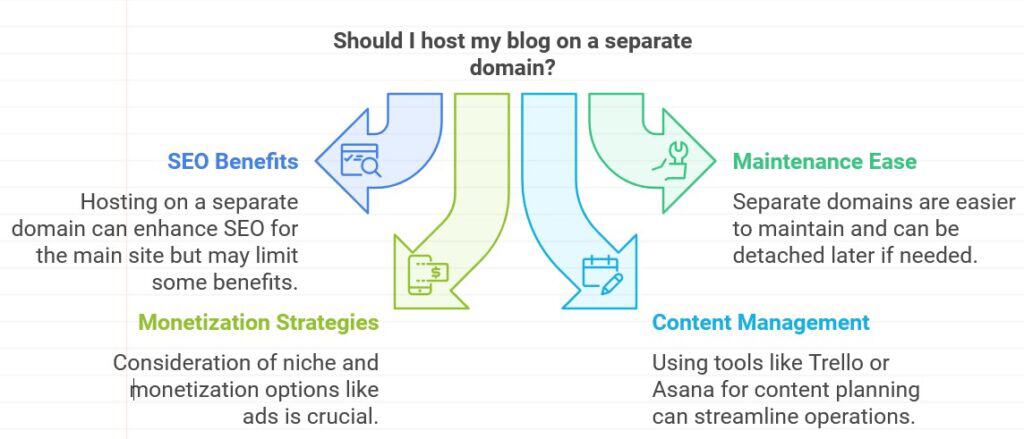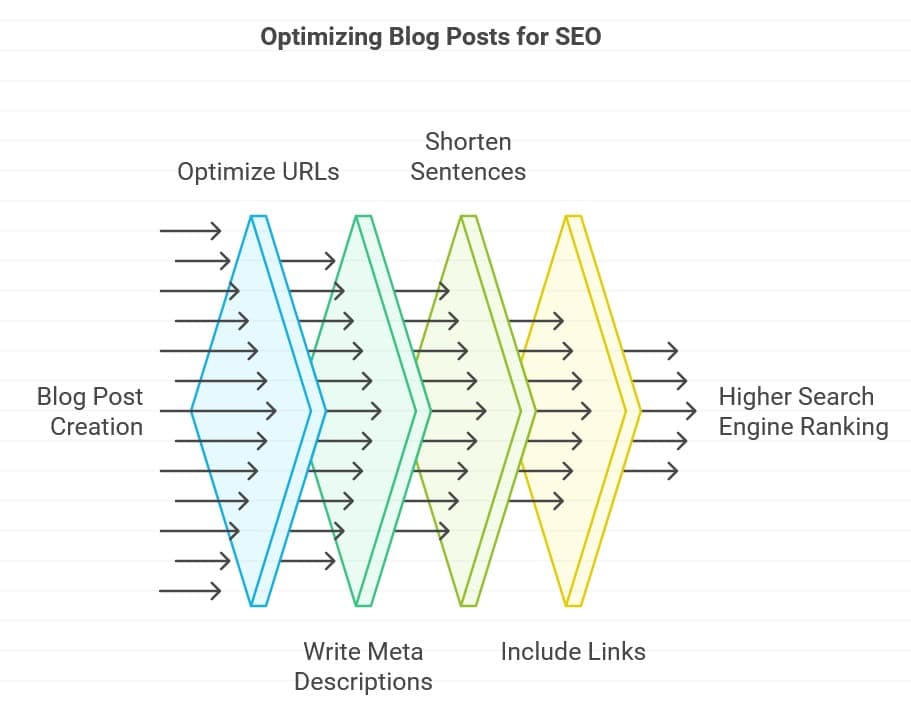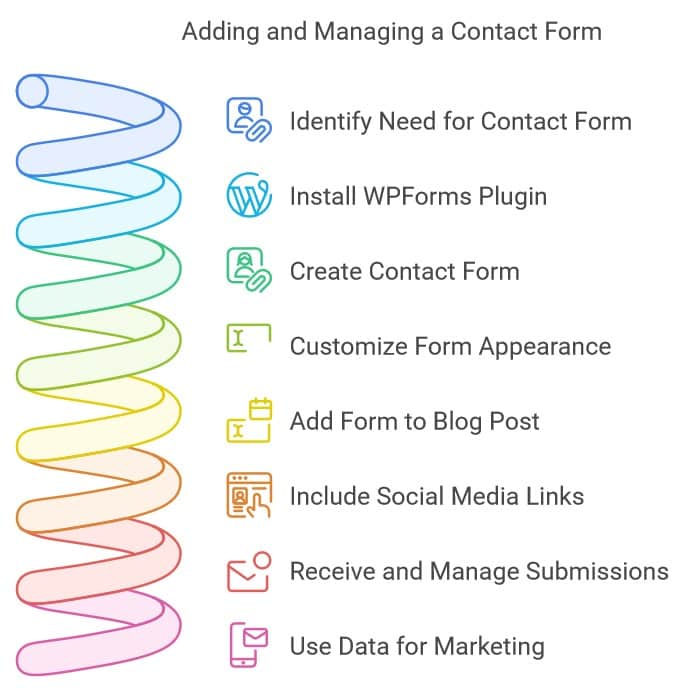To get started with your new blog, you need to create a separate website called a blog. Once you’ve done that, you’ll want to write clickable posts and use SEO to make sure they get picked up by Google. Also, make sure your images are easily recognisable, and add a contact form. Click here to learn how to setup blog posts to get clicks.

Contents
Create a blog that is separate from your main website
A blog on your main website can benefit from SEO, but you may not want it to appear on the first page of search engines. Therefore, it’s better to host your blog on a separate domain or redirect it to your main site. Backlinks from your blog will benefit your main website, but you won’t get all the benefits of a separate domain. Also, hosting your blog on a separate domain is easier to maintain, and you can always detach it later.
The Internet is growing faster than ever. Because more people are online than ever, more people will come to your blog. Therefore, you should consider your niche and decide how to monetize your blog. Remember that your audience should be willing to purchase something that you’re selling, so don’t use spaces in your domain name. However, you can opt for display ads, which are great for generating revenue.
Content is king! Don’t be afraid to post valuable content to your blog. Using the tools of a content calendar can make this process easier. Using a tool like Trello, Airtable, or Asana can make your content management life easier. In addition to a content calendar, you can create a content mix. This will determine your blog’s scope, categories, tags, and more. You can also use evergreen content to address common questions that your audience might ask. These types of content are educational and always a great way to build a brand.
The design of your blog has a significant impact on your engagement and search engine optimization. Readers make an instant judgment about your site based on how it looks. For example, The House That Lars Built has a simple yet appealing design, a fast loading site, soft colours, and playful illustrations. This style works in any niche, and you can incorporate it into your main website design.
Another strategy to promote your blog is to create an expert roundup of relevant information. In this way, you can attract visitors through expert roundup posts. By collecting quotes from a variety of different experts, you can increase your search engine visibility. Expert roundup posts are a great way to attract readers, generate links, and boost your traffic. If you’re able to do all these, you can consider creating a blog on a separate domain, which is separate from your main website.

Write clickable and SEO-friendly posts
Having SEO-friendly blog posts is crucial to boosting your visibility online and capturing traffic. Search engine optimization (SEO) is not something you do after writing a post; it should be an integrated part of the process. Here’s how to optimize your blog posts and get them ranked on the first page of Google and other search engines. Your blog posts should be crafted in a way to attract search engine users and answer their questions.
Firstly, you need to optimize your URLs. Every blog post has a unique URL. Remember to include your keywords in these URLs. Then, you should write a compelling meta description. The meta description is a short summary of the content of your blog post. This description is not included anywhere in the blog post itself, but it is what Google users see when they perform a search on a specific topic. Make it informative, concise, and click-worthy.
Secondly, optimize your sentences. Make your sentences short, around 10 to 15 words long. Short sentences keep your audience engaged for longer and boost the ‘time on page’ metric that search engines are interested in. This is another way to ensure your blog is SEO-friendly. Once you’ve made your summary, you can begin writing the actual blog post. Make sure your summary contains your focus keyphrase throughout the body of your content.
Finally, include at least a couple of links in your post. Internal links help your readers navigate through your site, while external links point to other pages of your website. It’s best to include a couple of internal links and a high-quality external link to an authority website in your niche. These links help your blog post rank higher in Google. This strategy will help you achieve better rankings on search engines and boost your site’s credibility.
In order to rank highly in search engines, your blog posts must be optimized for SEO. This means they must satisfy the intent of the searcher and make it as clear as possible to the search engines. To do this, you can use a checklist that helps you write SEO-friendly blog posts. Once you’ve created your checklist, make sure to follow it religiously. By following these tips, you can set up SEO-friendly blog posts in no time.

Create images that are easily recognisable
When setting up a blog post, create high-quality images that convey your message. The size and resolution of your images should be large enough to display the relevant information. Don’t try to fit too much information into a small space. Consider using HEIC or HEIG file formats instead of the standard JPG format. This will save you time and allow you to focus on other aspects of your business.
To optimize the appearance of your blog post’s image, choose an appropriate image file type. JPEG files are ideal for photographs, images with people, and other images with text. PNG files are recommended for logos, graphics, and text-heavy designs. GIFs are animated files, typically found in memes. They are not ideal for blog posts.
Include a contact form
Many blog owners forget to include a contact form in their blog post, but this can be one of the most overlooked features. Having several contact options can increase your conversion rates. Your customers are more likely to become loyal to you if they can reach you easily. Fortunately, professional digital marketers have been using contact forms for years to help businesses grow. You should also include a link to your social media profiles on your contact page.

To add a contact form to your blog post, you need to use the WPForms plugin. After installing the plugin, you can begin creating your form. Once you have added it to your page, you should see a preview of the form. After you have created the form, you can add a link to it in the content area. You should be able to easily access the form from the WPForms block, and you can customize its appearance using the fields button.
Once you’ve finished customizing your contact form, you can add a thank you message and a download link. Then, simply paste the shortcode into your post editor and preview the form. After your form is submitted, you should receive an email response. Make sure you check your spam/junk folder to ensure you’re not receiving emails from spam/junk mail addresses.
There are many benefits to using a contact form. It helps people contact you without leaving your page, which can be frustrating for your customers. By including a contact form on your blog, you can build a list of email addresses that you can use for marketing purposes. You can use this list to inform your customers of sales and new products, as well as to solicit their business. Email marketing campaigns are also an excellent way to grow your list and increase your bottom line.
If you have multiple email addresses, you can send notifications to different ones. In some cases, you can even send notifications to multiple addresses by separating them with commas. When the notification emails arrive, the form name and user name will be pre-filled in the email subject line. Additionally, if you reply to the email through the form, the email will go to your email as well.
📘 Want to create stunning eBooks or lead magnets in minutes?
🛠️ Use Sqribble – no writing, no design skills needed.
Frequently Asked Questions
How do I set up blog posts to get more clicks?
To set up blog posts that get more clicks, focus on writing compelling headlines, optimizing for SEO, using engaging images, and promoting your content across social media and email marketing channels.
What are the best practices for writing blog headlines that get clicks?
The best practices for writing blog headlines include using power words, creating a sense of urgency, triggering emotional responses, and including relevant keywords to improve search visibility.
How can I increase organic traffic to my blog posts?
To increase organic traffic, focus on keyword research, optimize your posts for SEO, build backlinks from reputable sites, and consistently publish high-quality content that answers user queries.
What role does SEO play in getting more clicks on blog posts?
SEO is crucial for getting more clicks as it helps your blog posts rank higher in search engine results. This includes optimizing meta descriptions, using relevant keywords, and ensuring fast loading times.
How can social media help increase clicks on my blog posts?
Social media can drive traffic by sharing your blog posts with a broader audience. Use engaging visuals, clear calls-to-action, and post at optimal times to maximize click-through rates.
What are some common mistakes to avoid when setting up blog posts for clicks?
Common mistakes include neglecting SEO optimization, using weak headlines, not promoting content effectively, and failing to include internal links or calls-to-action within the post.
How do I use internal linking to get more clicks on my blog posts?
Internal linking helps guide readers to other relevant content on your site. It also improves SEO by helping search engines understand the structure of your website.
Why is keyword research important for getting clicks on blog posts?
Keyword research helps you understand what your audience is searching for. By targeting these keywords in your content, you can improve your chances of ranking higher in search results and getting more clicks.
How can I make my blog post stand out in search results?
To make your post stand out, use eye-catching meta descriptions, write compelling titles with power words, and ensure that your content answers the user’s query comprehensively.
What tools can I use to track the performance of my blog posts?
You can use tools like Google Analytics to track page views, bounce rates, and user engagement. Tools like SEMrush or Ahrefs can help you monitor keyword rankings and backlinks.
Sources: WordStream OptinMonster Backlinko WPBeginner Semetrical Blog
